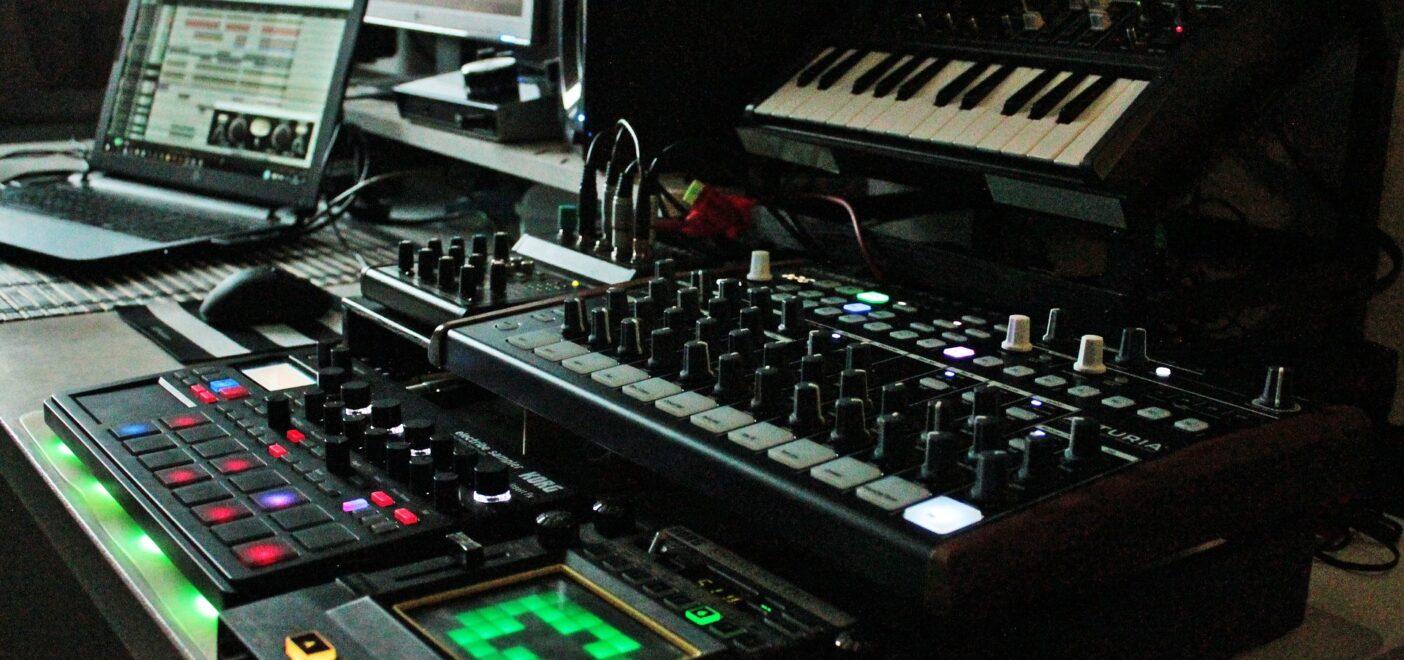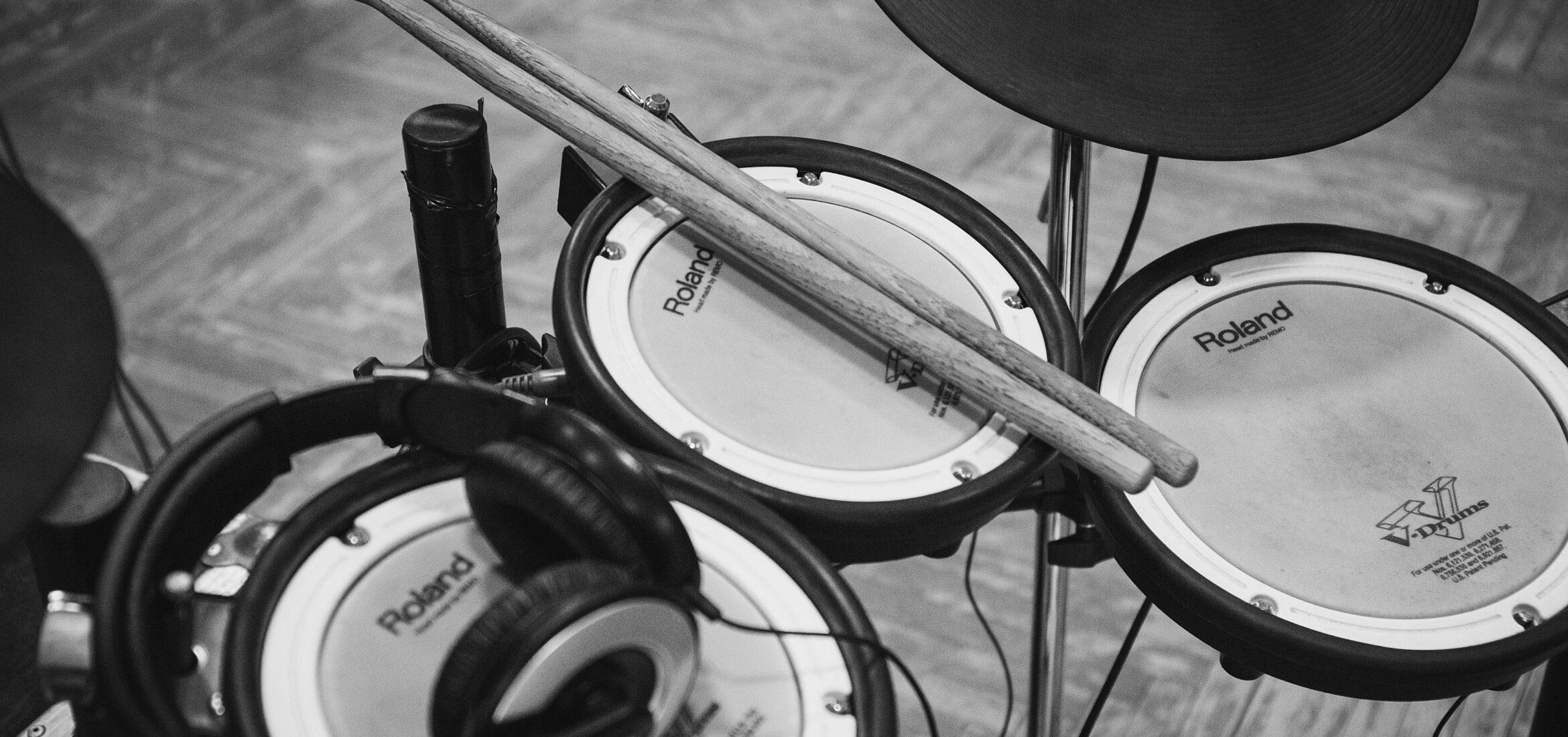In the past, we’ve gone into some great detail about programming drums and how you can make them sound more realistic. Things like varying velocity and timing, utilising layering to build a fuller sound, and some clever things you can do with automation. In this article, I want to address another important element of electronic drums and that is giving your sound some character. In the digital world, there is a tendency to be a little lazy as it’s easy to grab samples and program drums. My aim here is to give you some ideas on how to make your cold, digital drums sound fuller and more real. By thinking out of the box and approaching things from more of an acoustic standpoint, you can begin to give your drums some serious character. Let’s jump into these four tips that I’ve got and hopefully, we can get your drums sounding better than ever.
1. Constructing Drum Kits
The first topic that I want to address is the idea of kit construction. When you think about electronic drums from an acoustic perspective, there is usually some semblance of continuity. Drum kits are meticulously crafted with consistent source materials to provide a cohesive sound when played. Of course, many drummers like to vary up their kits, changing out the snare or cymbals for a different sound. However, this is usually done with great experience and understanding which means that the choices they make help to continue the level of continuity in sound.

Now let’s apply this form of thinking to our electronic drum kits. By being consistent with your sound choices in a piece of music and focusing on timbre, you are destined to create a stronger and more compelling electronic drum sound overall. Sometimes, this can be as simple as using drum sounds from the same sample pack. Much like a real drum kit, these sounds have been crafted to work well together. However, this isn’t always the case and often, sample packs are just bundled together to provide quantity over quality.
Consistency is Key
Making use of your ears is always going to be the best way to go when picking drum sounds. Ensuring that your drum fills use consistent sounding tom drums as not to break the illusion of their electronic nature. Make sure that your kick and snare (as the most fundamental parts of a kit) play well together and don’t represent different styles for the listener. Even choosing cymbals by their type and cadence can have a huge impact on electronic drums.
The other key element here is keeping a keen ear out for ambience. Many samples, unfortunately, tend to inhibit the sound of their original physical locations. This can be a big problem when constructing a drum kit because this ambience is very difficult to remove. You don’t want 90% of your drum kit to sound dry and tight whilst the kick drum sounds like it was sampled in a stadium. Continuity is key here and if you can keep it in mind, you’ll be building much better rhythm arrangements in no time.
2. Phase
As a sound engineer, I’m pretty much always harping on about the importance of phase relationships. It’s one of those things that many people struggle to recognise. Even more, pay little attention to it. But, a good phase can make an astonishing difference to the power of your music.
When it comes to our previous point of constructing drum kits, phase is a key concept that you need to be aware of to build the best possible sound. If you’re layering kicks and snare together and their phase relationships don’t match up, you could risk a weak mix when played back on other systems. In the realm of electronic drums, matching phase or eliminating problems isn’t exactly the easiest thing to go about. However, there are so many handy tools and simple tips that can help greatly.
Flip That Phase!
The first and simplest suggestion I have is to flip the phase switch. Once you’ve got your drum sounds chosen and arranged, hit play and using a phase flip switch on either your channel strip or a plugin, flip the phase of each element to see if it makes them sound better or worse. Think of it like being at the optician’s. They give you to option A and option B. Just like you’d use your vision to answer, make use of your hearing to decide what sounds best. Flip through all your elements and whatever sounds best is generally correct.

If you’ve got more of a specific and audible phase problem, such as two kick drums not sitting well together, there are certain tools you can make use of. The first is the cheapest and that’s your zoom tool. Get right in on the waveforms of the two problem sounds and have a look. You want to make sure that their peaks and troughs match as closely as possible. This might mean making minuscule shifts of just a few samples but it can mean all the difference between a hollow sound and a punchy one.
If you’re no good at zooming in and you just don’t trust your judgement, there is a plugin that can help here. Waves InPhase allows you to use side-chaining to calibrate and adjust two sound sources. You can make micro-adjustments and its built-in tools will help you to get the best possible solution with the smallest amount of work. Best of all, once you’ve corrected the issue then it will be applied in real-time to your entire track. This means you don’t have to shift every sample by a tiny amount. Much quicker, right?
3. Artificial Room Micing
This tip is probably one of the best things I ever learnt to do with regards to spicing up electronic drums. It’s likely finding the missing piece of a puzzle. Sure, reverb sends can help to add depth and colour to your drums but they typically exist to only add to your drums, not become a distinct part of them. This where creating a fake room mic, in mono or stereo, changes the idea of reverb and adds definition and power to your sound.

The basic idea here is to use your existing drums to create an additional sound layer that you can treat as part of your drum sound. Within the analogue world, room mics have always been the engineers cheat sheet for adding presence, ambience and straight-up power to any mix. You can almost consider room micing with drums like you do parallel compression. To start, we’re going to route all of the drum elements to a new channel. If you’re looking for power and punch down the middle of your mix, consider going mono with this channel. If you’re looking for ambience and enhance the stereo field, consider setting up the channel in stereo.
The Plugin Chain
Now that we have everything routed, we’re going to first set up a fully wet delay plugin. This is going to be used to slightly delay the reverb sound and create some separation between the individual drums and the artificial room we’re creating. Some reverb plugins come with a predelay setting so if you have this option, you won’t need the delay plugin. With this, we’re looking for a very short delay time. In fact, you can use a simple calculation to set your delay time to represent an actual distance.
The speed of sound travels at 343 m/s. This means that if we wanted our room mic to sound like it was 343 metres away, we’d need a delay time of 1000ms. In terms of an equation, we’re looking at (Distance/Velocity) * 1000. To set our artificial room mic at a distance of 5 metres, we need a delay time of 14.6ms.

With the delay set, you can add in your chosen reverb plugin and settings and now you’ve got your room mic all set up. A common approach for drum room mics is to apply quite heavy FET compression and really slam the channel. We do this because it increases the ambient level and squashes the peaks creating a full and powerful sound. Next time you’re working on an electronic drum mix, try giving this approach a go to add a sense of space and realness to the character of your drums.
4. Reamping Electronic Drums
If you don’t like the idea of creating a fake room mic, why not approach your drums with some reamping? By sending your drums out into an amp or a PA, you can make use of actual physical spaces. This will achieve an effect similar to what we were talking about before. In fact, this approach is considerably better. Not only do you create a sense of space but you will capture genuine ambient elements from the room you use. You’ll also encounter unusual reflections and sonic interplay with the other objects in the space. The ways in which you can manipulate this concept are almost limitless and some really unique sounds can be achieved, such as getting that 80s sound.
What’s even better about this approach is the fact that, if you have access to them, you can introduce the circuitry of high-quality microphones, preamplifiers, and other pieces of hardware to your otherwise entirely digital production. Reamping your drums and adding a bit of tube warmth to the ambience on the way back in can add so much colour to a mix. Digital music can sometimes feel a little artificial and stale. Utilising something like reamping through analogue hardware can help gel stuff together.

Try using guitar amps for adding some subtle distortion to your electronic drums. Make use of acoustic instruments with strings to add shimmer and unusual reflections to your sounds. Manipulate unusual spaces to build a unique soundscape. The possibilities really are endless!
TL;DR
Adding some character to your electronic drums helps to bring them to life. It’ll add colour and make them feel a little less digital. Think about continuity when you’re constructing your drum kits so that there is a sense of cohesion. Unusually placed sounds can unwantedly distract the listener. Make sure to pay attention to the phase when you build your kit. Don’t miss out on the power you’ll definitely want. Set yourself up an artificial room mic with some pre-delay to create a sense of space and ambience. This is quickly done and can add width and presence as well. Finally, re-amp those drums! Utilise real hardware to add a unique flavour to your music with real-world embellishments. The possibilities are truly endless.
About the Author

Tim Dunphy
Audio Engineer and Specialized Content WriterOver 10 years experience working in the audio business. Everything from coiling up XLRs to mastering albums. I'm a self-made man and I keep my assets in Bitcoin. What more is there to know!?
Leave a comment
Log in to comment




